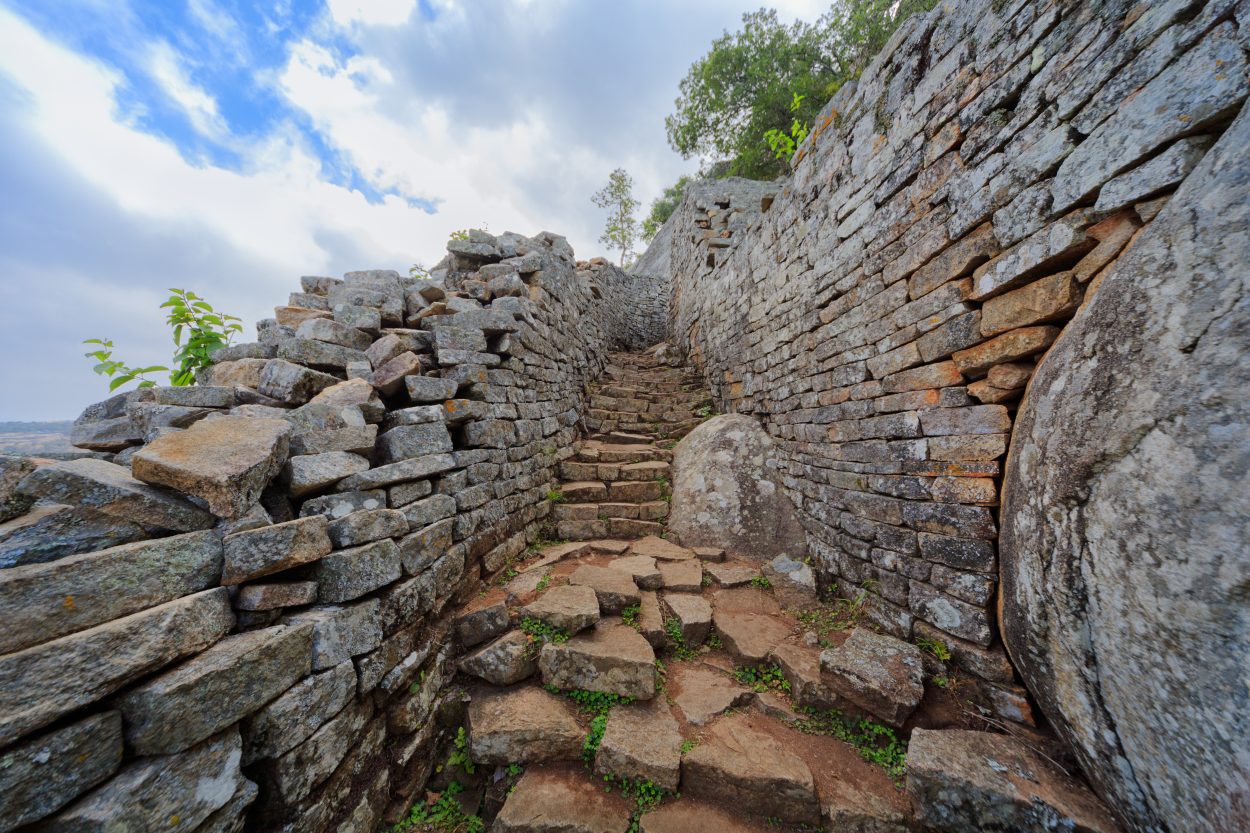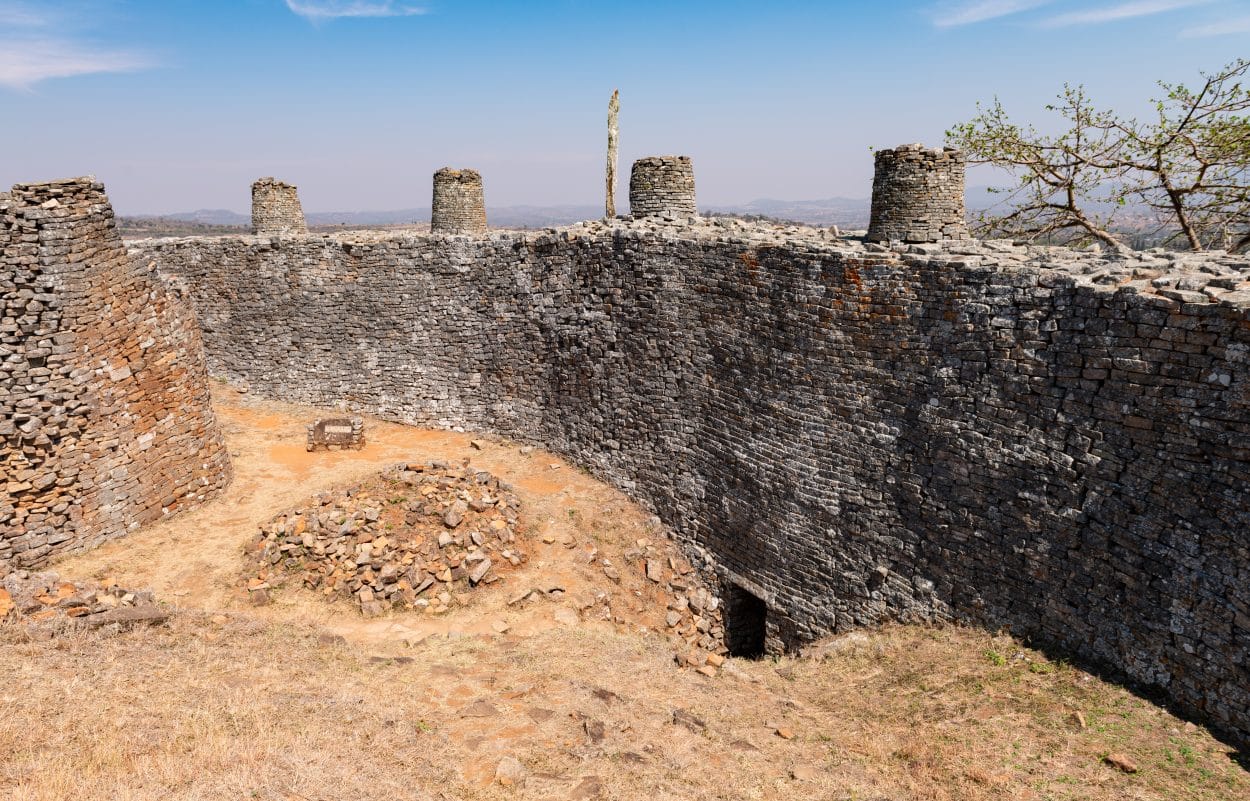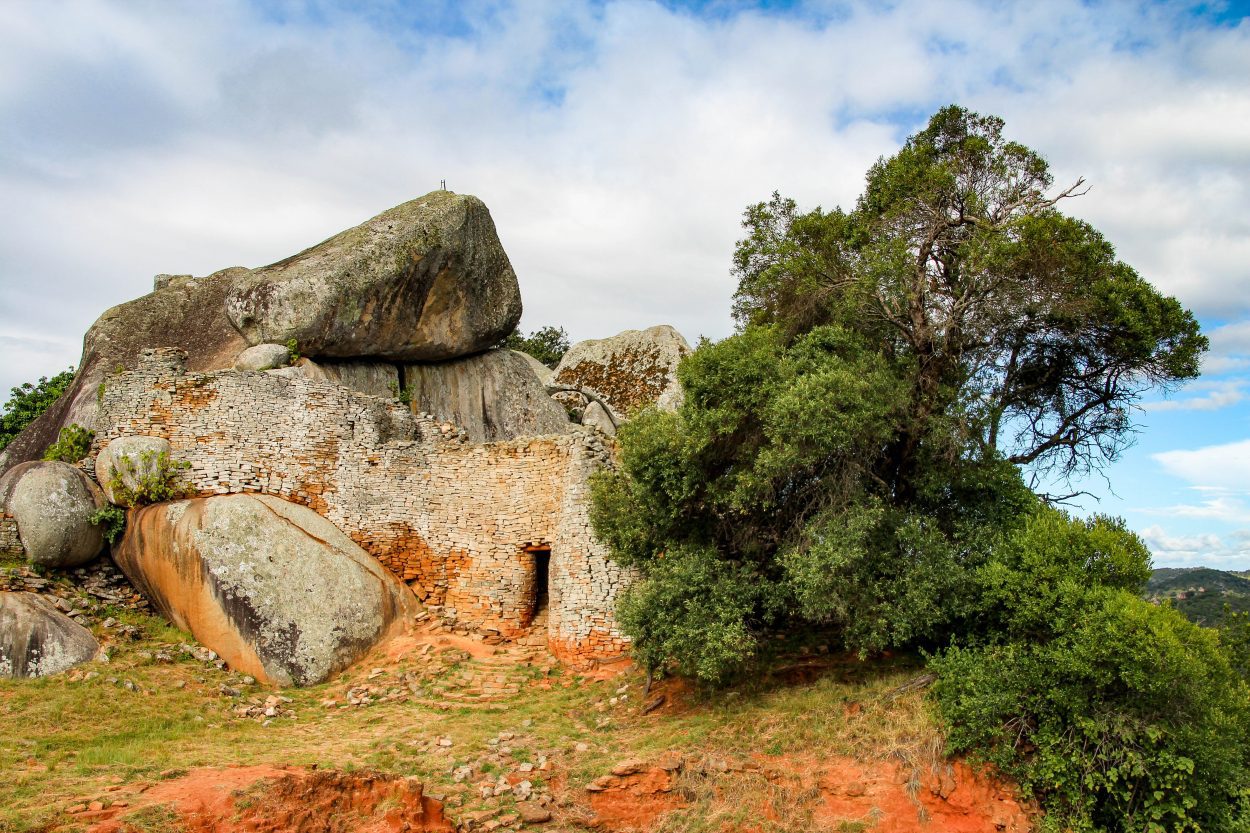Great Zimbabwe is the capital and seat of political power for an unknown kingdom, located in the south-eastern hills of present-day Zimbabwe.
The earliest knowledge of Great Zimbabwe in western culture comes from Portuguese traders visiting Angola and Mozambique during the AD 1500s. They described a vibrant kingdom in the interior of Africa, leading to the speculation that Great Zimbabwe was the mythical city of Ophir from the bible and became associated with stories about King Solomon and his mines.
In 1531, Vicente Pegado, Captain of the Portuguese Garrison of Sofala described Great Zimbabwe: “Among the gold mines of the inland plains between the Limpopo and Zambezi rivers there is a fortress built of stones of marvellous size, and there appears to be no mortar joining them…This edifice is almost surrounded by hills, upon which are others resembling it in the fashioning of stone and the absence of mortar, and one of them is a tower more than 12 fathoms high. The natives of the country call these edifices Symbaoe, which according to their language signifies court.”

Great Zimbabwe was first constructed around the 11th century AD, emerging as the economic and political centre in northern South Africa. This interpretation emanates from the fact that there are more than 300 sites on the Zimbabwe plateau that follows the same architectural tradition, but none of these sites compare to the enormity and grandeur of Great Zimbabwe.
At its peak, estimates suggest that Great Zimbabwe had a population of between 10,000 and 17,000 residents, a population equivalent to that of medieval London. Other estimates are more conservative, placing the population at around 2,000 inhabitants.
The origins of who built the complex is divided, but the most prominent consensus points to either the Gokomere culture, an ancient Bantu people that originate from nearby Masvingo or the Shona people.
From the Iron Age period, local farming communities in the area evolved into a chiefdom-level society, relying on long-distance trade to enable the inhabitants to finance the building of large stone structures.

Archaeological evidence suggests that the extent of trade reached as far as China and Persia, evidenced by the discovery of Chinese celadon dishes (mostly from the Ming Dynasty), Persian faience bowls, coral, coins from Arabia, glass beads and other non-local items.
Great Zimbabwe covers an area of 1,779 acres divided into three main areas: the Hill Complex, the Great Enclosure, and the Valley Ruins.
The Hill Complex sits on a 262-foot-high hill with an oval enclosure around 328 feet long and 148 feet wide. Within the complex is a series of curved hut structures called dagas that were constructed using dried earth, mud and gravel. This forms the oldest part of the site with evidence of occupation dating to farming and hunter communities that encamped on the acropolis as early as the 5th century AD.

Below the Hill Complex is the Great Enclosure called the Imbahuru, meaning “the house of the great woman” or “the great house” by the Karanga-speaking people who lived there during the 19th century. The enclosing wall is 800 feet long and was constructed with an estimated one million stone blocks, overlooked by a great conical tower which stands 30 feet in height.
The function of the Great Enclosure is unknown; however, it is speculated that it was the royal palace or a chiefdom’s residence. The presence of grooves in the walls and phallic structures has led to some historians to postulate that the enclosure may have also been used for adolescent initiation rites and religious ceremonies. Nearby are the Valley Ruins, a series of compounds from different periods of occupation that may have been a residential zone divided into the Upper and Lower Valley Ruins.
Great Zimbabwe went into decline and was ultimately abandoned around AD 1450. This may have been due to a decline in trade, the exhaustion of local gold mines, political instability or famine and water shortages induced by climatic change.
Only in recent times has Great Zimbabwe been attributed to the native African peoples, as studies of the monument by academics were subject to political pressure by the government of Rhodesia (former name for the country of Zimbabwe) to disconnect the monuments true African heritage.
Header Image Credit : Shutterstock





